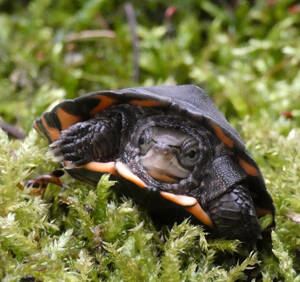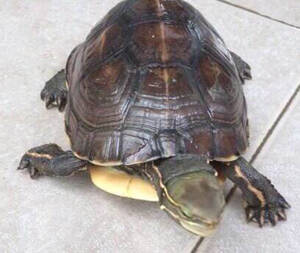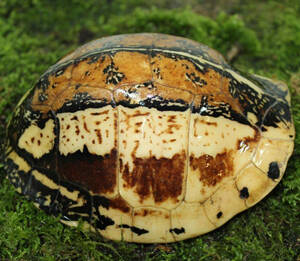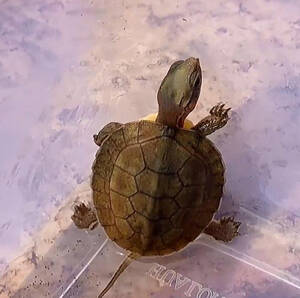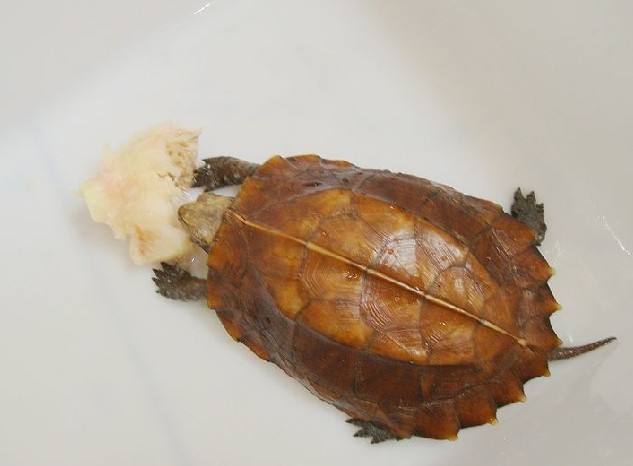Cuora mouhotii
IUCN
LCBasic Information
Scientific classification
- name:Cuora mouhotii
- Scientific Name:Cuora mouhotii,Keeled Box Turtle,Saw-edged box turtle, octagonal turtle, octagonal turtle, square turtle, saw-edged box turtle
- Outline:Testudines
- Family:Testudinidae B.turtle
Vital signs
- length:14-18cm
- Weight:800-1000g
- lifetime:30-40years
Feature
It likes warmth and is afraid of cold. The front and rear edges of the carapace have serrated shields.
Distribution and Habitat
Distributed in China, India (Azar Pradesh, Assam, Meghalaya, Mizoram), Laos, Myanmar, Vietnam. In China, it is distributed in Guangdong, Guangxi, Hainan, Hunan, Yunnan and other regions.
Lives in mountainous areas, jungles, bushes and streams
Appearance
The body is medium, with a carapace length of 130-159 mm and a width of 82.6-113.0 mm. The head is of moderate size, with smooth skin on the top of the head and the skin behind the head split into scales; the eyes are large; the eardrum is obvious; the snout is flat at the tip; the snout is shorter than the orbital diameter; the upper jaw is slightly hooked.
The carapace is high and flat, with 3 strong ridges. The back between the ridges on both sides is flat. The front edge of the carapace is flat and slightly serrated, and the rear edge is round and strongly serrated. The cervical shield is slender, about 3 times longer than the width; there are 5 vertebral shields, which are flat hexagonal and generally wider than the length. There are 4 pairs of costal shields, which are also wider than the length and wider than or equal to the adjacent vertebral shields. There are 12 pairs of marginal shields, and the outer ends of the last 4 pairs are pointed. The plastron is slightly smaller
Details
Keeled Box Turtle has two subspecies.

Keeled Box Turtle feeds on animals, but also plants, especially live food, such as locusts, mealworms, earthworms, etc. It likes warmth and is afraid of cold. It hibernates when the ambient temperature is 19℃, eats normally at 25℃, and eats the most at 28-31℃.
Males begin to lose appetite and become restless in late April, and the tip of their noses turn red. When stimulated by water splashes, their external penises extend. At this time, males often fight with each other when they meet males, and they will climb on the backs of females to mate. Females will move less during mating, and their cloaca will expand when they are stimulated or even without stimulation, and they will cooperate with males' courtship behavior to mate. The egg-laying period is from June to July every year, but some farmers have observed wild turtles breeding in September and October.
The peak mating period is from May to June, accounting for 35.16% of the annual mating times. Males chase females frantically, and males fight fiercely. The average daily temperature during this period is 23.2-25.3℃, but breeding turtles are also observed to mate more frequently from August to October. In sunny weather and high temperatures (average daily temperature above 30℃), they are more lazy and less active, and mating is only found at dusk. In rainy weather and low temperatures (average daily temperature 25-30℃), turtles are more excited, and mating is also found at noon. With artificial watering stimulation, mating is more frequent.
The female turtle's food intake increases significantly 15-30 days before laying eggs, and her appetite disappears 5-10 days before laying eggs. She starts to eat again 1-3 days after laying eggs. The eggs are long and oval, with white eggshells and are fragile. Each time 2-4 eggs are laid, the hatched turtles can reach a carapace length of 35 mm.
Saw-edged box turtles like to live in humid areas, so they are prone to various parasites. The most common one is mites, which mostly parasitize in the turtle's armpits, crotch pits, neck pits, etc. Therefore, for newly purchased turtles, first check and eliminate parasites to prevent infection. Saw-edged box turtles like to eat live small insects. Under artificial breeding, they can be fed earthworms, mealworms and fruit and vegetable baits to supplement various vitamins and balance the nutrition in the body. In spring and autumn, the feeding amount can be relatively increased, once a day. For weak turtles, an appropriate amount of multivitamins should be mixed into the bait, and their health status should be checked regularly. When the temperature is higher than 32℃ in summer, the Saw-edged Box Turtle will enter "summer hibernation". At this time, it should be prevented from direct sunlight and take corresponding cooling measures. When cooling, it is advisable to gradually reduce the temperature.
The number of natural resources of wild Saw-edged Box Turtle is extremely small. Due to the large-scale hunting by humans, according to the World Conservation Union (IUCN), as of 2007, the number of mature individuals in the wild Saw-edged Box Turtle population has been less than 250.
Due to the destruction and reduction of the habitat and breeding environment, the difficulty of natural proliferation, and the repeated capture of Saw-edged Box Turtle due to its high economic value, the wild resources have been severely damaged and are in an endangered state.
On September 30, 2020, the National Forestry and Grassland Administration issued the "Notice on Standardizing the Scope of Classification and Management of Prohibited Wildlife", prohibiting the breeding of Saw-edged Box Turtle for the purpose of eating, and allowing breeding for non-edible purposes such as medicine, display, and scientific research.
Listed in the "World Conservation Union Red List of Endangered Species" (IUCN 2000 ver 3.1) - Endangered (EN).
Listed in the "Convention on International Trade in Endangered Species of Wild Fauna and Flora" (CITES) - Appendix II.
Listed in the "China Biodiversity Red List - Vertebrate Volume" (Reptiles) - Critically Endangered (CR).
Listed in the "National List of Terrestrial Wildlife with Important Economic and Scientific Research Value" issued by the State Forestry Administration of China on August 1, 2000.
Listed in the second level of the "List of Key Protected Wildlife in Guangxi, China".
Protect wildlife and eliminate game.
Maintaining ecological balance is everyone's responsibility!



